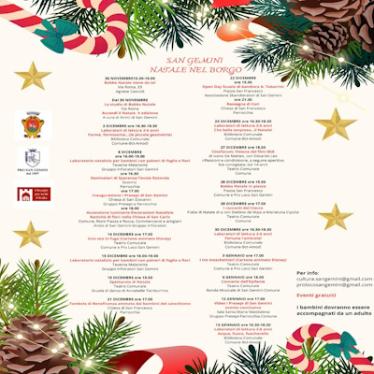HISTORY
The territory has been inhabited in Roman times, as proved by the numerous archaeological findings, but as can also be logically deduced by it nearness to the Via Flaminius. The original pre-Roman village, called Casventum in Roman times, took on the name San Gemini in the 9th century when a monk called Gemine from Syria started preaching there. His teachings and good works became so renowned that the town became known as his. History tells of devastation wrought by the Saracens in 882 and the alternation of control by Narni or the Catholic Church. When the district eventually became part of the Papal States (16th century), San Gemini became fief of various families (Orsini, Santacroce) until the Unification of Italy in 1861.
ART, CULTURE, ENVIRONMENT
Having typical medieval architecture, the town centre offers important artistic and religious monuments, such as the church of San Francesco, built circa 1200, Gothic style, with a single central nave, gives testimony to the cult of Saint Francis in San Gemini: the church of Santo Stefano around which was built the first habitations; the priory church of SanCarlo; the Palazzo del Capitano del Popolo, also known as the Palazzo del Popolo or Palazzo Vecchio, administrative offices; and next to that the Torre Esperia, tower with the bell to call town meetings built in 1318 by Maestro Matteo d'Orvieto . Also of interest are the church of San Gemine (Duomo) from the 12th century, that contains the saint's relics; the abbey of San Nicolò (11th century), whose portal was sold to an antique dealer in the 30s and today is found in the Metropolitan Museum of New York. Worthy of a visit are the Geolab Earth Sciences Museum with interesting interactive displays aimed at promoting Earth Sciences; Museo dell'Opera di Guido Calori exhibiting the paintings and sculptures of Guido Calori, as well as the files, drawings, sketches, and tools coming from his studio in Rome. Of considerable interest is the Carsulae Archaeological Area, which was an ancient Roman municipium that grew around the Via Flaminius: the excavations and research carried out have brought to light a good part of the Forum, including the remains of the basilica and twin temples; the Theatre and Ampitheatre; and the beautiful Arch of San Damiano, beyond which can be found funeral monuments of particular interest. Next to the Forum the attractive medieval church of San Daminao was built with archaeological finds from the area.




























